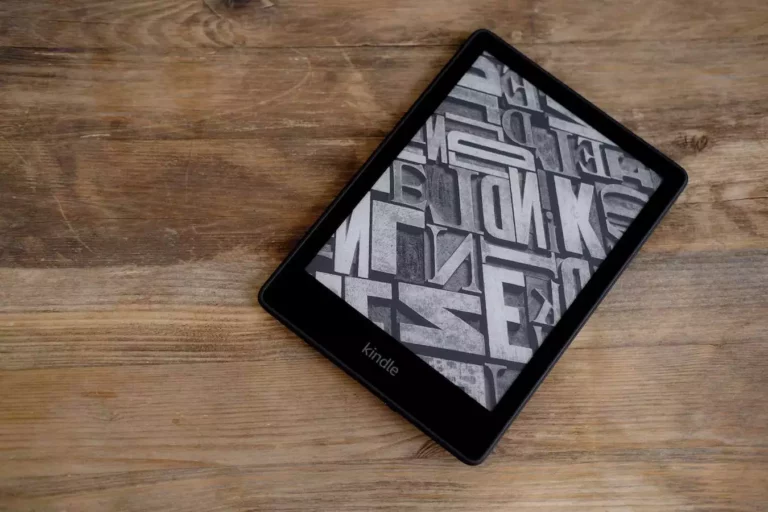How To Transfer Kindle Books? Step-by-Step Tutorial!
Disclosure: This post may contain affiliate links. I may get a commission if you decide to purchase through my links, at no additional cost to you.
One of the many good things about electronic books, especially Kindle books, is that you can purchase them using Amazon gift cards. You can also share them with other people through different mediums. Even if you just want to have your books on several devices, you’ll want to know how to transfer kindle books.
You can transfer your Kindle books by signing into your Amazon account on another device or sending them via email or with a USB cable. You can also share them using the loan feature and the Kindle Family Library.
There are many ways to move Kindle books from one place to another. Depending on your situation, some may be more convenient than others.
1. Transfer Using the Same Amazon Account
If you’re getting a new Kindle and want to transfer your books from an old device to the new one, look no further than this. And I mean it: you don’t have to do anything!
Once you sign into your new Kindle with your Amazon account, you’ll be able to view all the books you’ve bought on the Kindle store. Just make sure you’ve selected “All” instead of “Downloaded.” Simply download the books you want to read by tapping on them.
You may want to remove your Amazon account information on your first Kindle device. You can have a maximum of 15 Kindle devices using the same Amazon account. However, only 6 of those devices can read the same book simultaneously.
Did you mean to transfer books that you didn’t buy on the Kindle Store? That’s what the next solutions are for!
2. Send Books to Your Kindle Email Address
If you have non-Kindle books, this is simply the easiest and most reliable way to get them into your Kindle. I know we’ve been mostly talking about Kindle books, but the send-to-Kindle is one of those features that I think not enough people know about.
By non-Kindle books I mean any digital book that you bought outside of Amazon or downloaded from a copyright-free repository. Applying this method to books you bought on Amazon is not only a hassle, but it’s also not allowed by Amazon.
Before you start, you’ll need to have your send-to-Kindle address at hand. I’ve covered the topic of how to locate your Kindle email address in another article with full details. Do make sure to check that out as well!
However, here’s the basic steps you need to follow – simply go to “Settings” on your Kindle or on the Kindle App on your smartphone. You’ll see your Kindle’s unique address at the top of the screen. If you want, you can also take the chance to change it.
Here’s how to send books to your Kindle via Email:
- Connect your Kindle device to your home’s Wi-Fi network.
- Log in to your Amazon account using your credentials.
- Click ‘Account & Lists,’ then click ‘Your Content and Devices.’
- Now click on the Preferences tab.
- Click ‘Personal Document Settings.’
- Click ‘Add a new approved email address’ and supply the email address you will use to transfer your Kindle book.
- Open your email, compose a message, and enter your Kindle address.
- Attach your book and send the email.
That’s it! The book will be available on all your Kindle devices, including smartphones with the Kindle app.
The formats supported by this feature are:
- Microsoft Word
- HTML
- RTF
- Text
- JPEG
- GIF
- PNG
- BMP
- EPUB
If you’ve been a Kindle reader for a while, you might notice a change in the list. Previously, Kindle didn’t support ePubs. If you wanted to put an ePub on your kindle, you had to convert it to MOBI or AZW before you could send it.
Starting in late 2022, Amazon is changing things. Send-to-Kindle will no longer support MOBI and will start supporting ePub. It’s not clear why Amazon took this turn, but it’s likely a way to crack down on piracy and encourage users to buy books on the Kindle store.
The truth is that Kindle isn’t actually “supporting” ePub. Amazon is simply converting ePub to compatible Kindle formats behind doors—and, for some reason, stripping them off their cover image in the process. To learn more about this latest development, you can watch this YouTube video by Nick Kendall:
3. Wi-Fi Transfer
It’s worth noting that this method is only meant for transferring books across your own devices. It won’t let you transfer books to Kindle devices with a different Amazon account.
Here are the steps to transfer your Kindle book through your Wi-Fi network:
- Connect your Kindle device to the Wi-Fi network.
- Log in to your Amazon account.
- Click ‘Account & Lists,’ then click ‘Your Content and Devices.’
- Select the book titles you wish to transfer to your Kindle.
- Click the Deliver button on the upper left side of the webpage.
- A pop-up message will ask you to select the device to which you will transfer the Kindle book. Click the ‘Devices Selected’ box to choose the intended device.
- Once done, click the ‘Deliver’ button on the lower right side of the pop-up window. Your Kindle book will be sent to your other device automatically.
4. Using Your Computer To Transfer Your Kindle Book
This is perhaps the less sophisticated but also the simplest way to put books into your Kindle.
Your Kindle device comes with a USB cable that you can use to charge your device or transfer files, but you can grab any other USB cable you have lying around.
Here’s how to do it:
- Connect your Kindle to your computer using a USB cable. You’ll see your Kindle on File Manager or Finder. Open it as you would with any hard drive.
- Find the ‘documents’ folder.
- On another window, select the books you want to transfer and drag them into the ‘documents’ folder inside your Kindle.
If you’re wondering why you would ever need to do this instead of simply using the send-to-Kindle feature, it usually comes down to large files. Some books—especially PDFs with a lot of illustrations or comics—have a file size of well above 25MB, which is the size limit for attaching files to an email.
5. Loan Your Book

If you’re in the United States, you can loan a Kindle book that you own to a Kindle device with a different Amazon account for up to two weeks. The recipient must accept the loan within seven days; otherwise, it will be automatically canceled. They can use their Kindle or the Kindle App to read the loaned book.
Keep in mind that you can only loan any given book once. And while it’s loaned, you won’t be able to read it—much like a printed book.
It depends on the Kindle book’s publisher if you can loan the title. This feature excludes magazines and newspapers.
Here are the steps you can take to loan your Kindle book to anyone:
- Log on to Amazon using your credentials and check if the second account can loan the Kindle books you own.
- Go to My Account, select Manage My Kindle, and select My Kindle Library.
- Click the button with three dots beside the book title you wish to loan and select ‘Loan this title.’ If the option isn’t available, that means the book is not available for loan.
- Fill out the recipient’s Amazon account. You can choose to fill out the recipient’s name and write a personal message.
- Click ‘Send Now.’
Here’s how to return a loaned Kindle eBook:
- Log in to your Amazon and go to Manage Your Content and Devices.
- Click the Actions button before the borrowed book title and click Delete.
- Once the prompt appears, click Yes to confirm the action, and the system will return the book to the owner immediately.
6. Transfer Through the Kindle Family Library
If you simply want to share Kindle books across your family’s Kindle devices, then this is the option for you. Definitely beats having to buy a copy for every member of a household!
Here are the steps you need to take to transfer your Kindle books using the Kindle Family Library feature:
- Log in to your Amazon account and go to Your Account.
- Click the ‘Manage Your Content and go to the ‘Devices’ tab.
- Look for Household and Family Library.
- Click the ‘Add Adult, Add a Child or Add a Teen’ button. A pop-up window will prompt you to fill out the login credentials of the second Kindle device.
- Select the “Yes, we agree to authorize payment methods, Family Library, and manage child profiles” option, then click the Continue button.
- Once done, select the books you like to transfer and click the Finish button.
Final Thoughts
Digital books offer us many convenient features, and one of them is the ability to transfer them from one device to another. If it’s across your own devices, then you don’t even have to do anything.
When it comes to sharing books with other people, the Kindle store puts up several restrictions. Sharing books with the Family Library and loaning are two easy ways to get around it.
If you want to move non-Kindle books around, you can always use the send-to-Kindle feature.


![Can You Use Amazon Gift Card for Prime Membership? [Guide!]](https://curiouscustomer.com/wp-content/uploads/2022/12/Depositphotos_68325301_XL-768x512.jpeg)



![Amazon Gift Card Limits [Everything You Need to Know!]](https://curiouscustomer.com/wp-content/uploads/2023/01/Depositphotos_361606698_XL-768x489.jpg)
